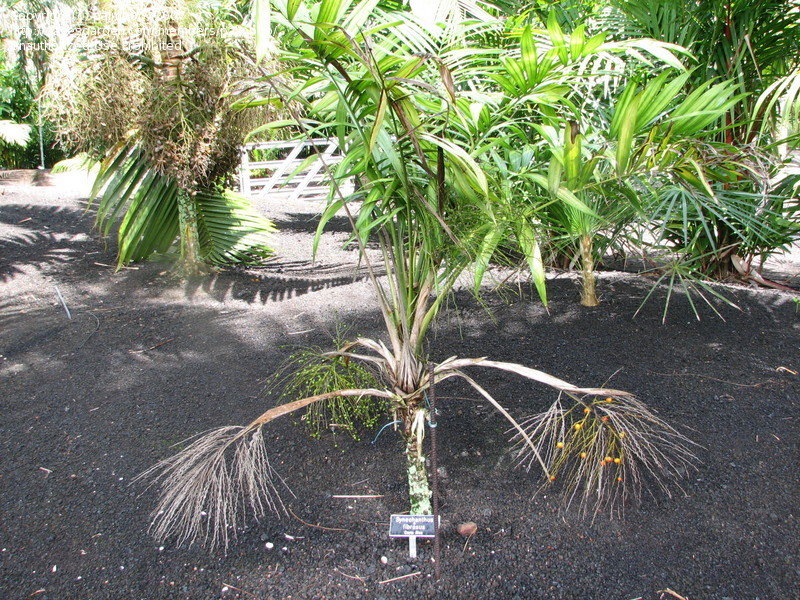Synechanthus fibrosus
(Synechanthus fibrosus)

Description
Stem solitary, slender, smooth, green, prominently ringed, rarely as much as a 5-6 m. high, 2-3 cm. in diam., usually much lower and often commencing to flower before an emergent stem develops or the stem sometimes decumbent. Leaves few, glossy deep-green; sheath and petiole together to 1.1 m. long or more, the sheath tubular and the petiole short on new leaves (fide O. F. Cook) but the sheath soon splitting opposite the petiole, functioning and differentiated from the petiole, only by the deeply channelled upper surface and a narrow, usually fibrous strip along the margin; petiole convex below, concave above; rachis convex below, angled above, about 7.4-12.5 dni.long; pinnae 10-23 on each side of the rachis, rarely regularly arranged but usually in 2 or more separated groups of 2-4 or more, basal pinnae 13-31 cm. long, 0.3-2.2 cm. wide, median pinnae 29-50 cm. long, 2.5-4.4 cm. wide, apical pinnae 19-30 cm. long, 4.2-8 cm. wide and with 3-7 principal elevated nerves, all pinnae slightly to markedly sigmoid, acute to acuminate, all but the several-nerved apical ones with 1 midnerve and 2 lateral nerves prominent and elevated on the upper surface, dull yellow.brown on the lower surface. Inflorescence to about 1 m. long; peduncle to 7.2 cm. long; rachis to 22 cm. long; branches and/or rachillae to 30 cm. long, subtended by a low, often acute bract, with a pulvinus much thickened and calloused in fruit between branch or rachilla and axis, lower branches divided into several (to 6) rachillae, all rachillae very slender, about 1 mm. in diam., minutely scaberulous. Acervuli of a pistillate and usually 59 staminate flowers; staminate flowers about 0.6-0.8 mm. high in bud, lobes of the calyx acute, about half as high as the petals, petals very prominently nerved when dry, at anthesis horizontally spreading and slightly recurved at the margins, forming a triangle basally about the apex of the pistillode, stamens 6, filaments short, incurved in bud but not inflexed at the apex, erect, about as long as the anthers and the petals at anthesis, pistill, ode shorter than the stamens, deltoidovoid, conic and shallowly 3-lobed apically; pistillate flowers about 1 mm. high, lobes of the calyx about half as high as the petals or somewhat more, petals strongly nerved when dry, staminodes lacking, pistil as high as the petals, stigmas recurved. Fruit globose to ellipsoid, very fleshy and slippery when bruised, changing from yellowish-green to yellow orange and finally scarlet, 14-21 mm. long, 10-14 mm. in diam. when dry (obovoid and about 1.5 cm. long, 1.0 cm. in diam. when fresh fide Steyermark) ; seed ellipsoid to globose, 12-14 mm. long, 7-12 mm. in diam.; endosperm nearly homogeneous or minutely ruminate marginally. (H.E. Moore. 1971)/Palmweb. Editing by edric.
Taxonomic tree:







